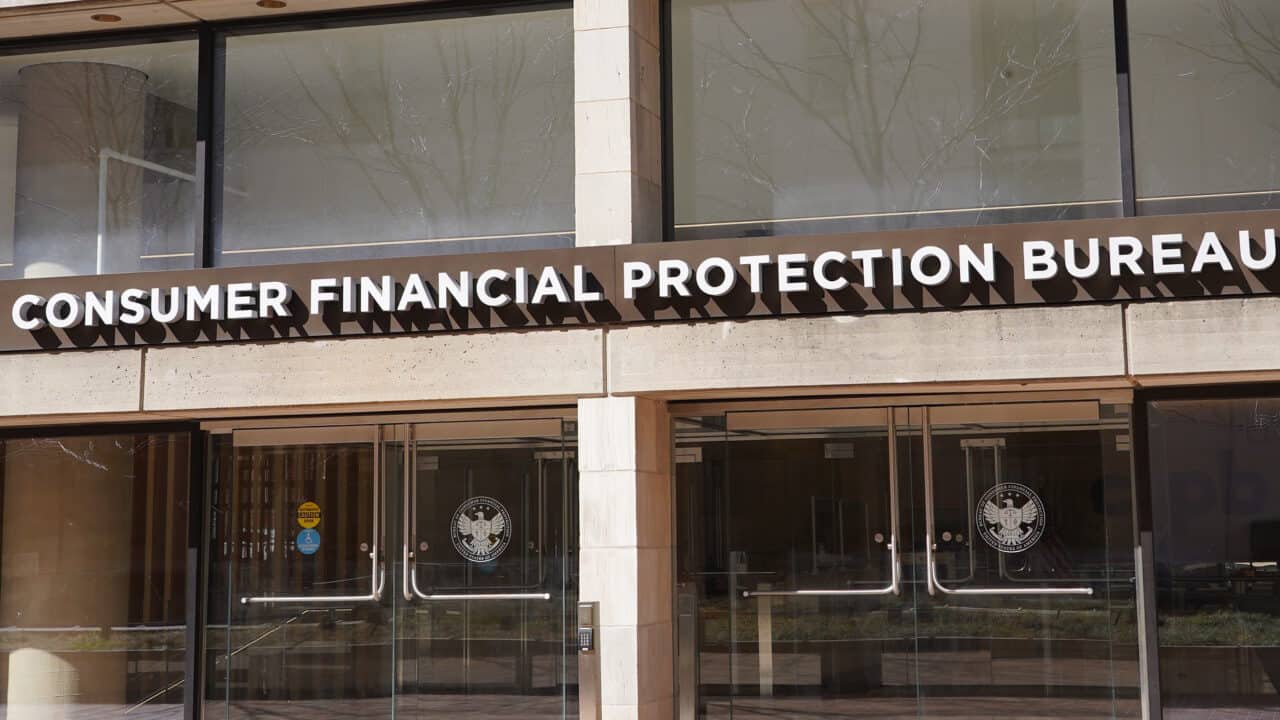 CFPB Building by Nikhilesh De/Coindesk is licensed under CC by 2.0 DEED.
CFPB Building by Nikhilesh De/Coindesk is licensed under CC by 2.0 DEED.
On January 5th, Americans for Tax Reform submitted a comment letter to the Consumer Financial Protection Bureau (CFPB) requesting the withdrawal of a rule applicable to General-Use Digital Consumer Payment Applications. The rule would effectively hand over regulatory powers to the CFPB to supervise and oversee the digital payment market with the justification that the bureau is attempting to protect consumers from risks associated with new services emerging from digital payment platforms. The comment finds multiple deficiencies in the CFPB’s rulemaking proposal, making it unfeasible and unnecessary to regulate the digital payments sphere. The proposal targets financial technology firms or nonbanks offering services encompassing wallet and payment functionalities but fails to provide a thorough cost-benefit analysis or any substantive reasoning explaining how federal oversight would be beneficial for consumers. It is likely, however, that new regulations imposed by the CFPB would harm consumers.
According to the Proposal, 76 percent of Americans use peer-to-peer payment (P2P) apps. The increasing reliance on digital payment applications underscores the importance of preserving a competitive and innovative market. Adding new regulations and supervision of the large participants targeted by the CFPB will lead to increased compliance costs, which may compel digital P2P transaction platforms to reduce additional services or raise transaction costs—passing on these costs to consumers. Small and mid-sized digital payment platforms may be disincentivized from expanding operations to avoid regulatory pressure.
The comment notes the legality of the rule is questionable and tests the limits of the bureau’s statutory authority under the Administrative Procedure Act (APA). The CFPB issued this rule without any directive from Congress.
The CFPB issued the Proposal without specific direction from Congress. Although the CFPB alleges that it currently possesses enforcement authority, the agency “has not previously had, inside many of these firms, examiners carefully scrutinizing their activities to ensure they are following the law and monitoring their executives.” Congress has not directed the CFPB to perform examinations of the intended nonbanks, so it remains to be seen how the CFPB can successfully promulgate rules that would likely be struck down as arbitrary and capricious
The CFPB undermined its case as noted in the letter by stating that states already conduct regulation and oversight of digital payment and wallet services. The duplicative nature of requiring additional reporting on the federal level is unwarranted and no reason is given by the CFPB as to why such a measure would be needed, let alone beneficial to consumers.
State regulators already require money transmitters to disclose information about their transactions. The Proposal admits that state regulators “already require money transmitters” to report the “number of transactions.” If state regulators already collect this information, it appears unnecessary for the CFPB to duplicate their efforts—especially since there are no identifiable consumer benefits to adding new federal oversight.
The proposed thresholds for invoking supervisory jurisdiction over these firms are arbitrary by nature, with no clear answer or reason given for the chosen transaction thresholds. The CFPB is giving an incentive to nonbank financial institutions to avoid expanding and falling under the purview of the CFPB.
According to the Proposal, “the proposed threshold includes the aggregate annual volume of both consumer-to-consumer or consumer-to-business transactions facilitated by all general-use digital consumer payment applications provided by the nonbank covered person and its affiliated companies in the preceding year.” Second, a large participant may not be a small business entity. According to the CFPB’s estimate, 17 entities would fall under the CFPB’s supervisory authority under the definition of this rule.
The proposed annual transaction volume threshold arbitrarily expands the extent of the CFPB’s supervisory authority over consumer transactions. The CFPB fails to disclose why it needs to aggregate the transaction volume count or whether it is legitimately necessary. This criterion seems to have been fabricated with the intent of expanding the number of entities that can be supervised by the CFPB.”
The comment letter also points out that the CFPB failed to do any serious analysis on the market it is attempting to regulate, admitting that the CFPB lacks data and is unable to make empirical projections analyzing how opening the potential for new regulatory rulings could affect nonbanks’ prospects for growth and expansion:
The CFPB has failed to properly analyze the effects of this rule on consumers. The Proposal states that “[t]he CFPB lacks detailed information with which to predict the extent to which increased costs would be borne by providers or passed on to consumers, to predict how providers might respond to higher costs, or to predict how consumers might respond to increased prices.” The increase in costs could negatively impact investment and maintenance of tokenization technology and data privacy for consumers. It is possible that the increase in compliance costs could also distort the allocation of credit over certain payment rails due to the new imposition of examinations. It may also discourage new firms from expanding to a size that would then fall under the new CFPB examination rules for general-use digital consumer payment applications. This would create significant barriers to entry, which could consolidate the market even more and eventually harm output and increase prices for consumers. The Proposal would propagate market distortions instead of fixing them.
The CFPB even admits that “available data on entities operating in the proposed market for general-use digital consumer payment applications is incomplete.” In fact, the CFPB is attempting to regulate a market that it does not understand.

